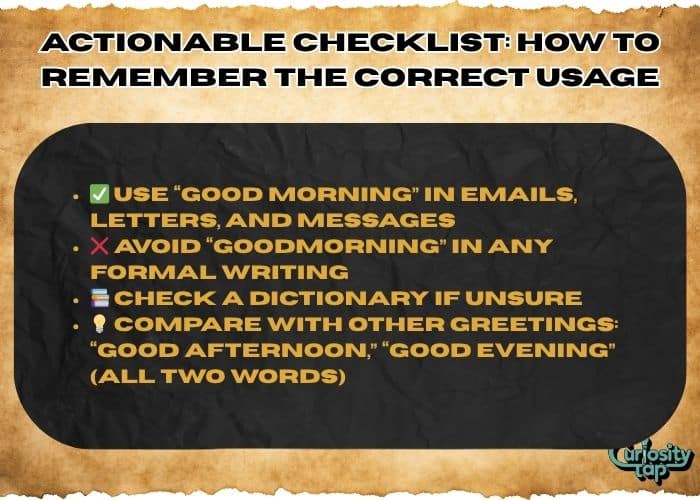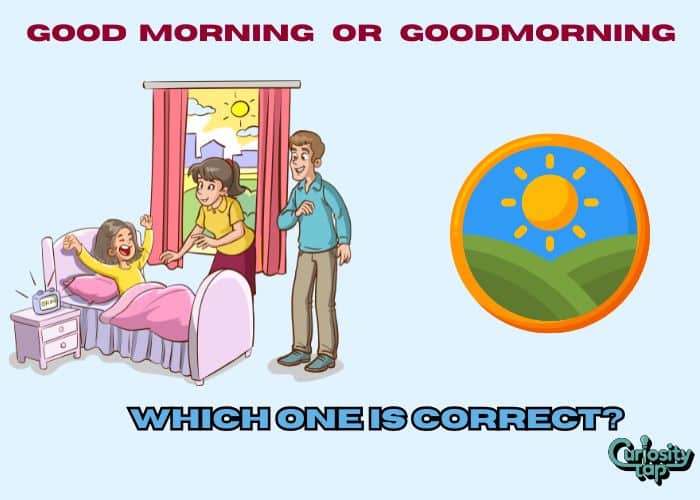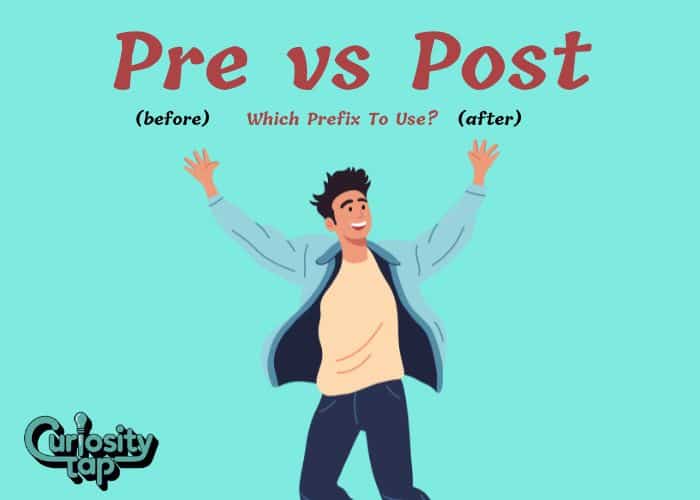When texting a friend or sending an email to your boss, you may have typed “goodmorning” and suddenly wondered wait, is that even correct? If you’ve been unsure about whether it’s “good morning” or “goodmorning,” you’re not alone.
This common spelling confusion can make even fluent speakers second-guess themselves.
In this guide, we’ll break down the grammatical rule behind the greeting, show real-life examples, and make sure you never make this mistake again whether you’re writing professionally or casually.
Why This Common Greeting Causes Confusion
It Sounds Like One Word
The phrase “good morning” is said quickly in speech, making it sound like a single word. That’s why many people assume it should be written as “goodmorning” just like “goodbye”, which is one word.
Digital Age Typing Habits
In the age of instant messaging, speed often trumps accuracy. But understanding the grammar behind the phrase will help maintain professionalism in written communication.
Is It Goodmorning or Good Morning?
Correct: “Good Morning” (Two Words)
“Good morning” is the correct spelling. It’s a standard English greeting made up of an adjective (good) and a noun (morning), and it follows the natural rules of English grammar.
✅ Correct: Good morning, Sarah!
❌ Incorrect: Goodmorning, Sarah!
Incorrect: “Goodmorning” (One Word)
“Goodmorning” is not recognized in any standard dictionary (Oxford, Merriam-Webster, or Cambridge). While it may appear in informal settings like social media posts, it is not grammatically correct.
Real-Life Example: How One Email Almost Cost a Job
In 2023, a job applicant named Amanda sent an application email that began with:
“Goodmorning, Mr. Evans,”
The recruiter who emphasized attention to detail in the job description noticed the incorrect greeting and flagged the applicant. While the typo wasn’t the only reason Amanda didn’t get the job, it contributed to an impression of carelessness.
This small mistake could have been avoided with a better understanding of proper English usage especially in professional contexts.
Grammar Rule Breakdown: Why It’s “Good Morning”
| Word | Part of Speech | Explanation |
|---|---|---|
| Good | Adjective | Describes the quality of the morning |
| Morning | Noun | The time of day being greeted |
English grammar generally keeps adjective-noun combinations as two separate words unless they evolve into compound words over time (like sunflower or breakfast).
When Do Greetings Become Compound Words?
Examples of Compound Greetings
Some greetings do become single words over time like:
- Goodbye (originally “God be with ye”)
- Goodnight (now commonly accepted as one word, though “Good night” is also correct in certain styles)
But “Good morning” hasn’t made that shift yet.
Still Two Words
Unlike “goodbye,” “good morning” remains two words in formal, academic, and professional writing.

Actionable Checklist: How to Remember the Correct Usage
✅ Use “Good morning” in emails, letters, and messages
❌ Avoid “Goodmorning” in any formal writing
📚 Check a dictionary if unsure
💡 Compare with other greetings: “Good afternoon,” “Good evening” (all two words)
People Also Ask: FAQs
1. Is “Goodmorning” ever correct?
No. “Goodmorning” is not accepted in formal English writing and is not listed in standard dictionaries.
2. Can I use “Goodmorning” in text messages?
While it may be understood, it’s still technically incorrect. It’s better to write “Good morning” even in informal settings.
3. Is “Good Morning” capitalized?
Capitalize both words only in headings or where stylistically required (like at the start of a greeting line in an email).
✅ “Good Morning, Team!”
❌ “good morning, team”
4. What about other greetings like “Goodnight”?
“Goodnight” is more commonly accepted as one word, especially in informal use. But “Good morning” remains two words.
5. What’s the origin of “Good morning”?
It dates back to the 15th century, combining “good” (pleasant) with “morning” (the early part of the day) as a polite greeting.
6. Is “Morning” alone enough as a greeting?
Yes, “Morning!” is a casual, shortened version and is widely accepted in everyday conversation.
Pros and Cons: “Good Morning” vs. “Goodmorning”
| Feature | Good Morning (✅ Correct) | Goodmorning (❌ Incorrect) |
|---|---|---|
| Accepted in grammar | ✅ Yes | ❌ No |
| Professional communication | ✅ Yes | ❌ No |
| Common in text messages | ✅ Yes | ✅ Yes (but still wrong) |
| Dictionary recognized | ✅ Yes | ❌ No |
Conclusion: Get It Right Every Morning
Whether you’re writing to a friend, a boss, or a client, knowing the difference between “Good morning” and “Goodmorning” is essential. One small typo can make a big impression sometimes the wrong one. Stick to the grammatically correct form to show your attention to detail, professionalism, and language fluency.
So next time you say hello at sunrise, say it right.
Sources
Sources:
- Merriam-Webster Dictionary – https://www.merriam-webster.com
- Oxford Learner’s Dictionary – https://www.oxfordlearnersdictionaries.com
- Grammarly Blog – https://www.grammarly.com/blog/common-grammar-mistakes
Read more knowledgeable blogs on Curiosity Tap
Is this article helpful?

Jackson Pearson is a passionate educator and language enthusiast behind the blog Jackson Pearson. With years of experience in teaching and writing, he specializes in simplifying complex grammar rules, breaking down tricky vocabulary, and crafting learning guides that are both engaging and practical. His mission is to help readers boost their English skills whether they’re beginners or brushing up for fluency. Through every article, Jackson brings clarity, structure, and a spark of curiosity to the world of English learning.



